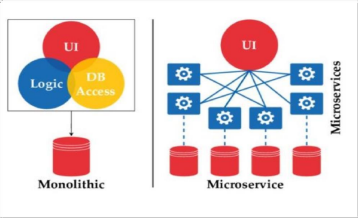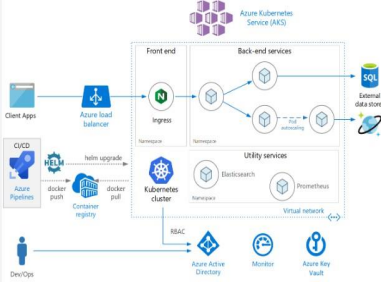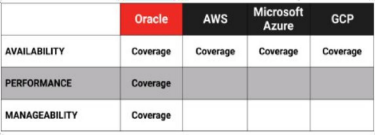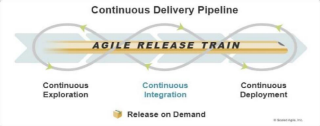Abstract
Customer application development has shown that cloud-native structures deliver improved operational efficiency and unlimited growth capabilities and reduced operational expenses. A discussion follows about cloud-native transformations of PeopleSoft systems with attention to containerization and cloud migration and micro services along with AI-based automation. Strategic information about PeopleSoft legacy-to cloud evolution comes from both real-world and industry-specific case research that demonstrates the shift to modern agile cloud-native infrastructure deployments. The document investigates migration obstacles and presents performance improvement strategies for PeopleSoft systems operating within contemporary information technology frameworks. PeopleSoft enterprise resource planning (ERP) systems deliver solutions through cloud-native transformations to modern business needs. The transition creates benefits for handling large workloads and delivering solid performance together with better security and lower costs of operation. PeopleSoft’s capability receives transformation through Cloud-based micro services along with containerization and AI-driven automation which helps organizations gain higher efficiency and agile operation. PeopleSoft can perform seamless cloud platform updates and improve user experiences and maintain compliance through its connections with Oracle Cloud Infrastructure (OCI) and multi-cloud platforms. This research examines the fundamental factors leading PeopleSoft toward becoming a cloud-native solution while analyzing enterprise advantages and evaluation obstacles before projecting ERP solutions' path in contemporary digitization.
Keywords: PeopleSoft Migration, Oracle Cloud Infrastructure and Cloud Computing, Digital Transformation, Security, Compliance.
1. INTRODUCTION
Organizations throughout various industries traditionally choose PeopleSoft as their Enterprise Resource Planning (ERP) platform. Organizations need modernization because their increasing enterprise data volumes along with performance bottlenecks and security threats. The standard PeopleSoft implementation model depends on one unified software package deployed on-site which restricts organizations from responding quickly to changes.
1.1 Rationale for Modernization
The following issues represent main problems with legacy PeopleSoft system architectures: • Physical infrastructure maintenance costs businesses a high amount of money. • Traditional PeopleSoft systems do not offer scalable capability without immediate user request. • The complex updating processes involving PeopleSoft systems demand many hours of human intervention.
International Journal for Multidisciplinary Research (IJFMR) E-ISSN: 2582-2160 ● Website: www.ijfmr.com ● Email: editor@ijfmr.com
- Security practices of legacy systems cannot meet present-day standards for compliance and security measures.
The need to overcome these obstacles compels organizations to implement cloud-native approaches with containerization technology and automated AI systems for operation excellence improvement.
1.2 Containerization: A Paradigm Shift in PeopleSoft Deployment
1.2.1 Definition of Containerization
Software applications along with their dependencies become portable execution containers within the framework of containerization. The containerized environment differs from traditional virtual machines because it delivers operating system-based abstractions which maintain platform portability and divide system resources in isolated sections.
1.2.2 PeopleSoft Implementation in a Containerized Architecture
Modern PeopleSoft deployments leverage Docker and Kubernetes for resource optimization and scalability. Deployment packages (DPKs) which previously used to install monolithic PeopleSoft instances are now renovated to launch modular PeopleSoft instances automatically. 1.2.3 Key Advantages of Containerization
- Organizations experienced reduced provisioning times as much as 90% shorter according to their reports.
- Through Kubernetes users can automatically scale their resources as well as reorganize their system's capacity.
- Auto-Failover Mechanisms: Ensures minimal service disruptions and downtime. • Cross-Platform Compatibility: Enables seamless movement between hybrid and multi-cloud environments.

Figure 1: Comparison of Monolithic vs Containerized PeopleSoft Deployment
1.2.4 Containerization Workflow for PeopleSoft
- A prerequisite step includes establishing both Docker/Kubernetes runtime systems. • DPKs serve to build containerized images of PeopleSoft modules through the image creation process.
International Journal for Multidisciplinary Research (IJFMR) E-ISSN: 2582-2160 ● Website: www.ijfmr.com ● Email: editor@ijfmr.com
- The deployment process of Kubernetes clusters should be configured for load balancing across the environment.
- Modular PeopleSoft instances should get deployed across multiple nodes through service deployment methods.
- Continuous Monitoring: Use observability toolslike Prometheus and Grafana for real-time diagnostics.

Figure 2: Tools Used in PeopleSoft Containerization
2. Multi-Cloud Deployment: PeopleSoft on OCI, AWS, and Azure
2.1 The Case for Cloud Migration
PeopleSoft deployments that operate in the cloud deliver better system elasticity and self-updating security system features. OCI and AWS and Microsoft Azure serve as popular platforms for organizational migration due to the benefits they offer.
2.2 Case Study: SDI’s Oracle Cloud Migration
- 85% performance improvement post-migration (Beastute, 2024).
- 50% reduction in total cost of ownership.
- 100% system availability ensured under SLA.
The deployment period decreased by 90% which ultimately quickened operational procedures. 2.3 Case Study: City of Boston’s AWS Modernization
- Significant PeopleSoft performance improvements.
- Reduced operational expenses (OpEx) through AWS-native optimizations.
- Enhanced disaster recovery and business continuity.
International Journal for Multidisciplinary Research (IJFMR) E-ISSN: 2582-2160 ● Website: www.ijfmr.com ● Email: editor@ijfmr.com
2.4 Comparative Analysis of Cloud Hosting Options
Table 1: Comparison of OCI, AWS, and Azure for PeopleSoft Deployments

Table 2: Comparison of OCI, AWS, AZURE
|
Feature Native PeopleSoft Support Scalability Potential Cost Efficiency |
Oracle Cloud (OCI) |
AWS |
Azure |
3. Micro services and Server less Architectures in PeopleSoft
3.1 Decomposing Monolithic PeopleSoft Systems
Traditional PeopleSoft systems operate as monolithic entities which reduces their capability to be flexible and simple to maintain. Microservice decomposition promotes system modularity and speeds up development processes and protects systems from wide-scale problems.
3.2 Benefits of a Micro services Model
- Independent Component Scalability.
- Agile Development & Deployment.
- Fault Containment: Limits the impact of failures.

Figure 3: Transition from Monolithic to Microservices in PeopleSoft
International Journal for Multidisciplinary Research (IJFMR) E-ISSN: 2582-2160 ● Website: www.ijfmr.com ● Email: editor@ijfmr.com
4. CI/CD Pipelines for Continuous PeopleSoft Deployment
4.1 The Importance of CI/CD
CI/CD automates software delivery processes which enhances both delivery speeds and decreases system downtime.
4.2 Implementing a CI/CD Framework
- DevOps Tools: Use Jenkins, GitLab CI/CD, or Azure DevOps.
- Deployment Strategies: Implement blue-green deployments to avoid service interruptions. • Automated Testing & Rollbacks: Enhances system resilience and deployment efficiency.

Figure 4: CI/CD Workflow for PeopleSoft Deployments
5. Results and Discussion
Using OCI as a replacement for PeopleSoft leads to substantial cost reductions while improving execution speed, securing operations, and streamlining administrative processes. OCI migrations lead organizations to save money since they avoid spending on hardware expenses and adopt a usage-based pricing structure. The migration process optimizes resource distribution, which leads specific companies to achieve 35% savings in their infrastructure spending. The OPEX economics allows organizations to preserve financial flexibility while providing better control of future budgets. OCI’s dynamic scaling functions enhance performance, maintaining peak performance during busy times while stopping system shutdown events. High-performing computing systems, low-latency networks, and optimized storage solutions enable organizations to execute transactions swiftly dec, reuse query durations, and enhance end-user satisfaction. OCI provides dynamic resource allocation that allows organizations to manage increased processing demands effectively during student enrollment and business fiscal cycles. OCI enhances security and compliance by providing built-in encryption and advanced threat detection functionalities that help organizations address data breach risks. OCI implements security through IAM alongside network security groups and ongoing security monitoring functions. OCI provides features that enable enterprises to follow GDPR alongside FERPA and HIPAA standards by defending sensitive information from unauthorized intrusions and cyber threats. PeopleSoft Cloud Manager, through lifecycle automation, reduces maintenance expenses by simplifying update and clone functions, making them possible without interrupting system availability. The automated system reduces human involvement and helps lower the risk of human mistakes and exposure to the system. Implementing AI-based predictive maintenance enables OCI to operate its PeopleSoft environments at peak performance and react effectively to unknown system failures. Maintaining migration challenges such as data integrity threats, stakeholder opposition, and integration complexity must be performed alongside these system advantages. Business continuity risks arise from legacy dependencies and application reconfiguration requirements, thus demanding
International Journal for Multidisciplinary Research (IJFMR) E-ISSN: 2582-2160 ● Website: www.ijfmr.com ● Email: editor@ijfmr.com
extraordinary attention and proper management. Successfully preventing risks during transition depends on three key best practices: phased migration alongside thorough testing and IT training for staff members. A combination of rollback systems and ongoing surveillance needs to exist to immediately identify and address any problems that develop following the migration process. This study establishes that OCI delivers a flexible, economical, and protected platform to transform PeopleSoft applications. OCI delivers native cloud services as part of its complete portfolio, which delivers agility while improving operational efficiency and digital transformation preparedness. OCI enables enterprises to reach sustainable value and competitive superiority through its performance optimization features, automation capabilities, and security systems delivered in evolving technological environments.
6. Conclusion
Universities that choose Oracle Cloud Infrastructure for PeopleSoft migration embark on a strategic decision that enables institutions to update their enterprise applications through this move. The system allows organizations to operate their enterprise applications at lower expenses and with enhanced performance. The migration process enables multiple traits, such as cost reduction and performance optimization, while sustaining operations for extended periods. Educational institutions should follow a proper migration framework during their change process. The migration lets organizations obtain operational agility and scalability with robust security features and enhancements. OCI’s advanced automation. The system uses high-performance computing abilities together with cloud-native features and capabilities. OCI offers a smooth journey for users through its platform, which decreases downtime duration while providing maximum efficiency and optimizing resource utilization.
Furthermore, migration organizations can generate innovative opportunities through artificial intelligence and its integration into systems. Cloud-based applications use driven analytics, performing predictive maintenance, automated functions, and lifecycle management. These enhancements improve the technology configuration and operational efficiency and allow institutions to adapt their operations according to changing needs. The technology and business requirements evolve, so institutions need to alter their systems. OCI offers incorporated security measures and compliance functions. The built-in security features serve to maintain regulatory compliance and safeguard sensitive institutional data. Despite the evidence, Organizations that hope to receive the benefits must resolve migration obstacles such as data integrity risks, system reconfiguration complexities, and user adaptation. The study highlights the best dust level of best practices, including phased migration strategies, strict testing strategies, and stakeholder participation. The implementation of testing and stakeholder engagement, along with comprehensive evaluation steps, led to a successful system transition. Leveraging OCI’s comprehensive ecosystem, Institutions using PeopleSoft systems can protect their deployments for future needs by taking appropriate steps. The platform enables organizations to push forward with digital changes and stay ahead in their market. Information technology continues to define the operational environment worldwide.
7. Future Research Directions
- AI-driven automation for PeopleSoft functional modules.
- Hybrid cloud strategies integrating on-premises and cloud-native PeopleSoft instances. • Advanced security frameworks tailored for containerized PeopleSoft architectures.







